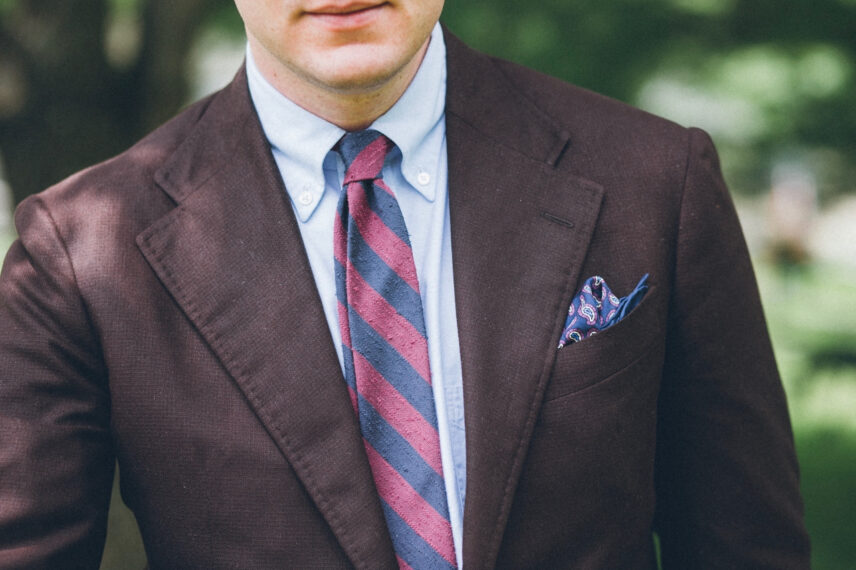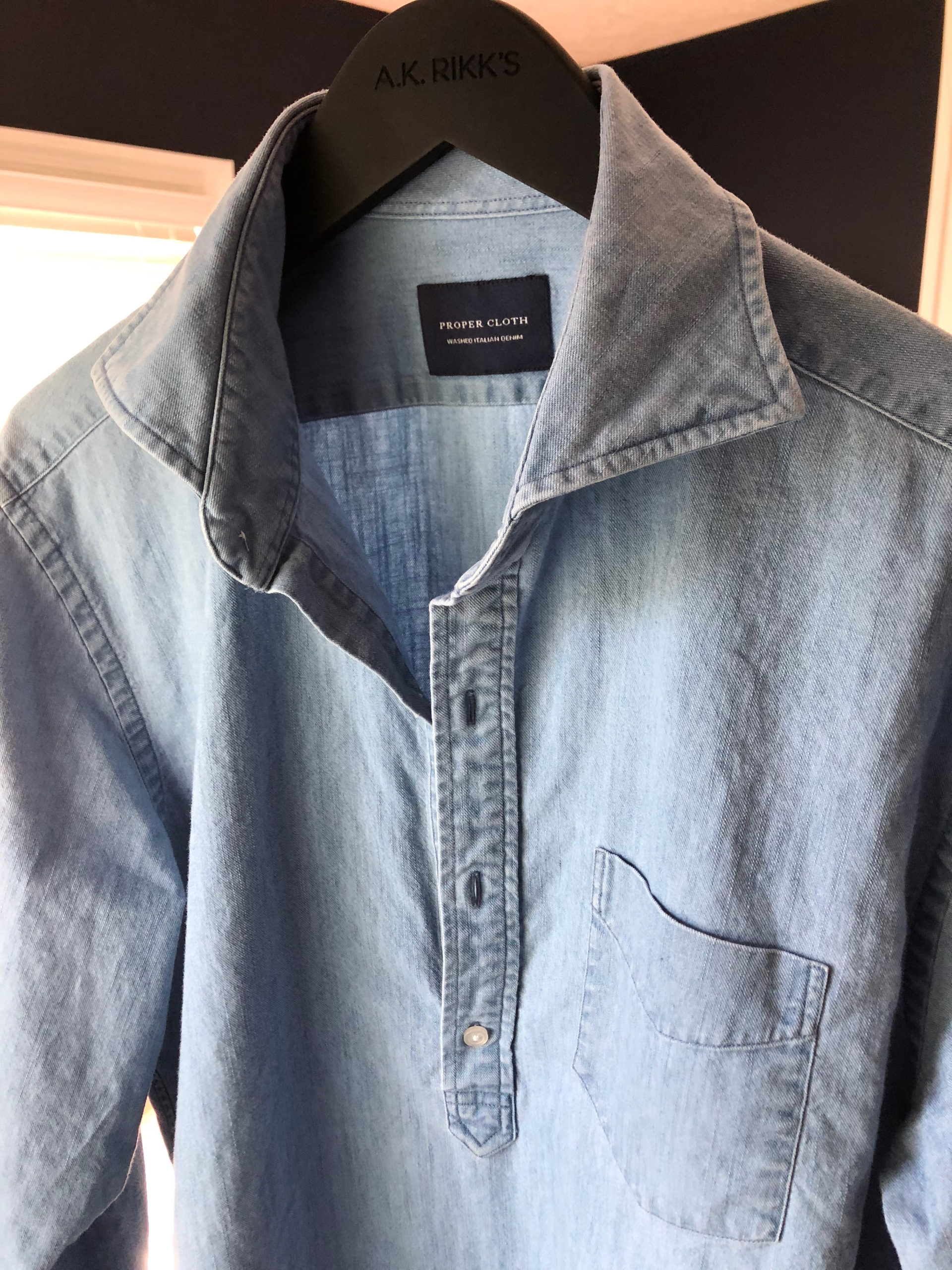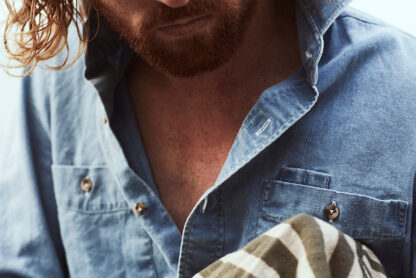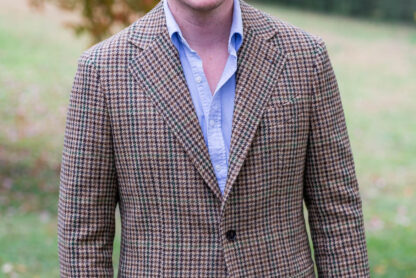A tailored jacket—blazer, sportcoat, suit jacket—is one of the most flattering things a guy can wear. I advocate for wearing one with a pair of dark or white jeans with a spread-collar button-up shirt and some suede shoes (chukkas or loafers are my typical choices). It’s a great, contemporary look that’s just dressed up enough to look smart, but just dressed down enough not to trigger the inevitable “Why are you so dressed up?” questions you get when wearing a fully tailored outfit.
But there is an enormous pitfall in this mode of dressing, which is: If you wear a suit jacket dressed down with jeans, or sometimes even with other tailored trousers that don’t match it, and the jacket is not meant to be worn separately, you look like a rube.
So in this post, let me briefly explain how you can tell if a suit jacket can be worn on its own, apart from its matching pants.
Quick definition time
A suit is a tailored jacket and tailored trousers made out of the same fabric (a 3-piece suit includes a vest in the same fabric too). It’s usually sold together as a set so whatever size pant they include is what you get, though sometimes retailers/makers sell them as “separates” which allows you to choose any size of trousers to match any size of jacket. But don’t be fooled by the word “separates”—that doesn’t automatically mean the jacket will look good worn separately from the pants. It might! But if so, it isn’t because it’s sold this way.

A tailored jacket (aka sportcoat or blazer) paired with tailored trousers in a different fabric is not a suit. For instance, a navy blazer with gray tailored trousers: not a suit! This type of outfit is inherently less formal than a suit.

It’s that difference of formality that makes or breaks the ability to wear a suit jacket separately.
Because in addition to the inherent formality of the matching jacket + trousers combo, the fabric of the suit communicates a certain level of formality on its own. The more formal the fabric, the worse it will look when broken up from its matching trousers. How bad will depend on how much less formal the pants you’re trying to wear with it are.
What are the characteristics to look for in a suit fabric to indicate whether it can be worn separately?
There are two aspects of a fabric that indicate how it’s meant to be worn: Fabric weave and pattern.
Fabric weave
Any fabric can be used to make a matching jacket + trousers to form a suit, but the fabrics that communicate higher formality are finely woven, with a smooth feel in the hand (or simply its “hand” as it’s sometimes referred to). So for instance a super fine wool twill that’s smooth to the touch, or a sharkskin which is a fine weave that sometimes has a slight sheen. This finely woven fabric, particularly if it’s a solid color like navy, light gray or dark gray means you’re likely looking at a suiting cloth.
More textured fabrics like flannel, hopsack, tweed or linen are all less formal and can all be, generally speaking, worn separately—at least with other tailored trousers. I’ll get to jeans in a moment.

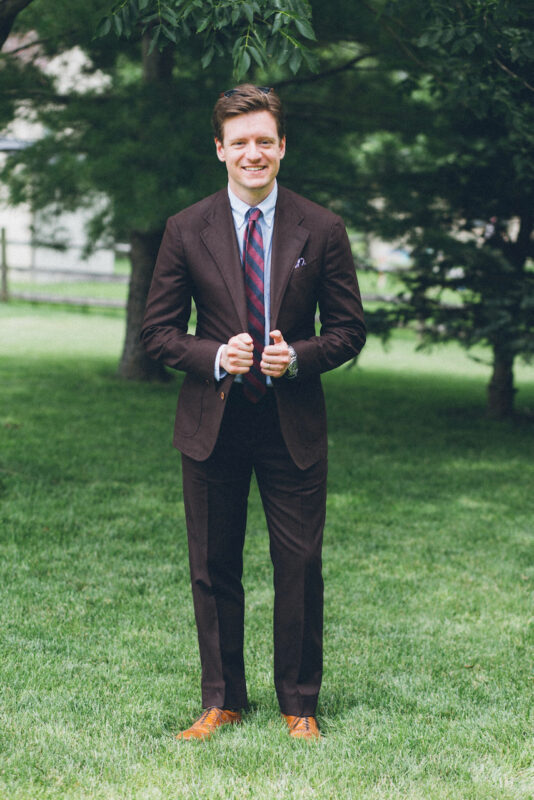
Pattern
Solid colors are the most formal of suit fabrics. Patterns like glen plaid, houndstooth, or herringbone automatically bring it down in formality. How far down basically depends on a couple things. One is how much contrast the pattern has—higher contrast is less formal, low contrast (i.e. a pattern made of multiple shades of the same color) is more. The other is the size of the pattern. A large plaid is much less formal than small-scale plaid. (Stripes such as pinstripes, chalk stripes and shadow stripes are tricky; it isn’t that a striped jacket can never be worn on its own, but it almost always looks bad; like 90% of the time. So my rule is: don’t wear striped jackets separately.)

![]()

Putting the concepts together
Finely woven fabric in a shadow stripe? Too formal to break up.
Tweedy fabric with a high-contrast glen plaid? Wear separately with confidence.
Hopsack in a medium-scale shadow plaid? The hopsack weave makes it wearable separately.
Linen in a solid color? Linen makes it wearable separately.
What jackets look good with jeans?
The more textured, the better.
![]()
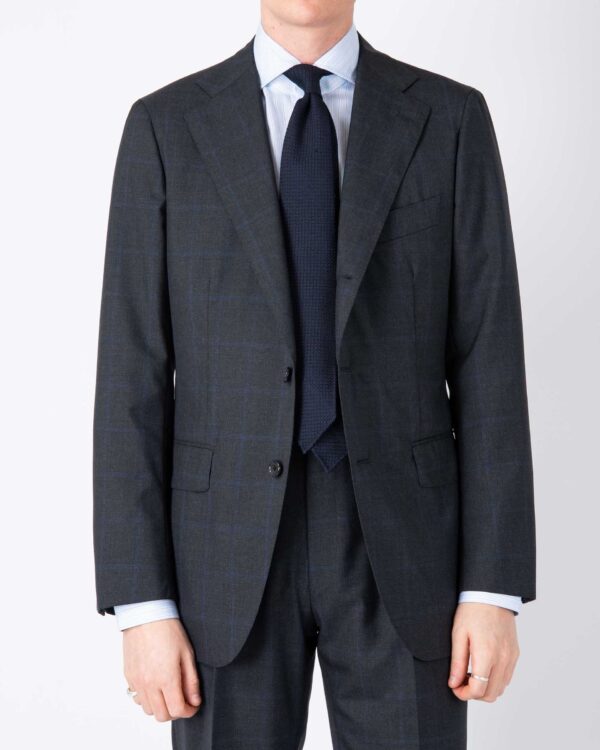
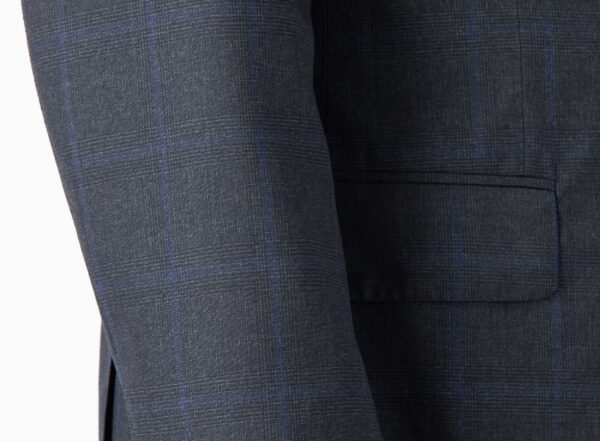
Take a look at this Cavour jacket that’s made in a navy blue glen plaid fabric. It’s a very fine wool twill. The pattern on its own might indicate it could be worn separately, but the fabric weave is too smooth and fine, that the formality gap is too wide to bridge. It could maybe be pulled off with gray tailored trousers with a similar fine weave, say worsted wool or another twill, but definitely not with jeans.
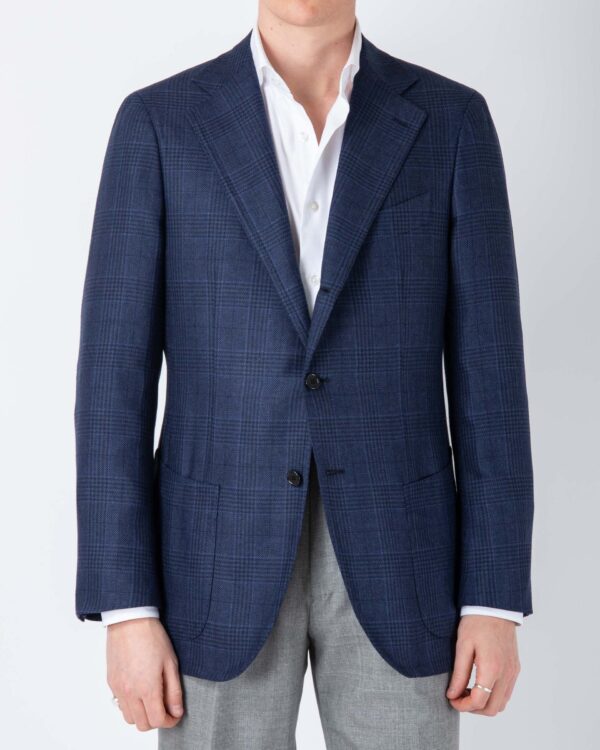
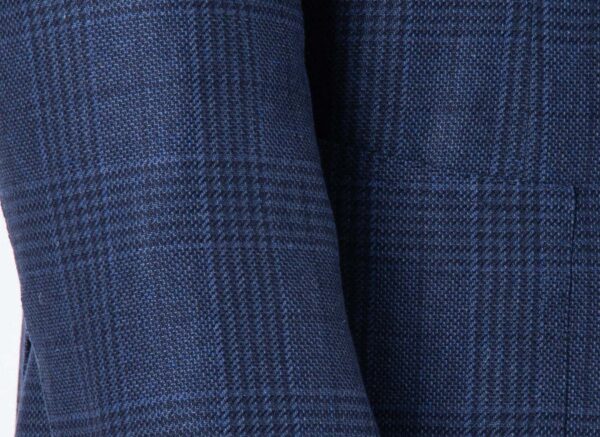
Now compare it to this similarly patterned jacket from the same maker. It’s a 100% silk cloth with loads of texture, both in how its woven as well as in the higher contrast of the colors used to create the pattern. Suddenly it would work well not only with separate tailored trousers but it would look great with white denim or something like stone-colored chinos.
The navy blazer
The all-time most versatile tailored jacket is a navy blazer. It’s a jacket designed and intended to be worn separately on its own. It can be made from any fabric, though the most common you’ll find are wool twill and wool hopsack. I prefer the more textured hopsack, which makes it feel more at home with denim. But even ones made from twill can be worn with jeans.
This begs the question, however: what if you have a navy suit? Can you wear the jacket separately as a blazer? The answer is: most of the time, yes, but avoid doing so if the jacket is made from very, very fine fabric (like super 150s), or one that has a noticeable sheen to it (like sharkskin sometimes has). One giveaway that it’s an orphaned suit jacket and not a blazer are the buttons: usually a navy suit will have black or dark navy buttons, while a blazer might have brown horn, smoke mother of pearl, brass or even white mother of pearl. But as long as the jacket isn’t super shiny or super finely woven, in all likelihood, it can safely be worn as a blazer.
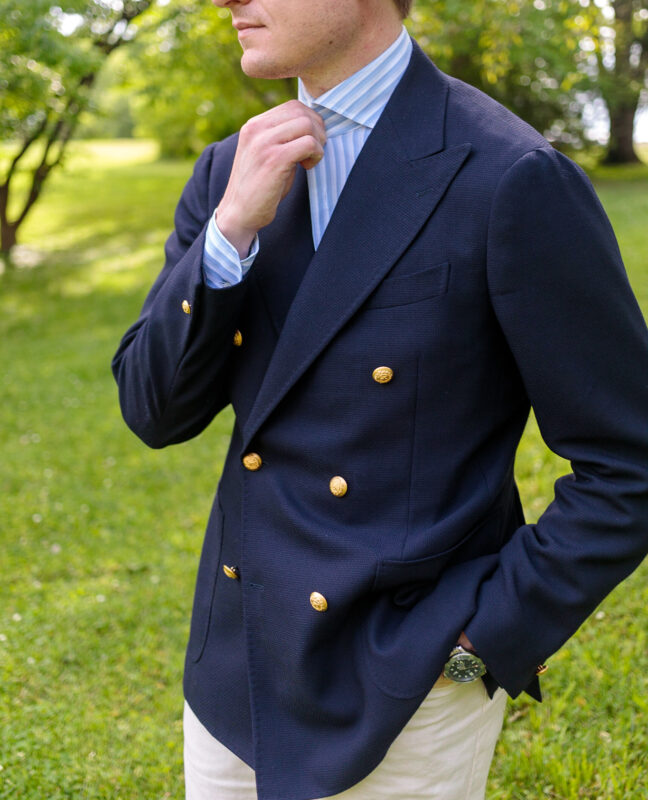
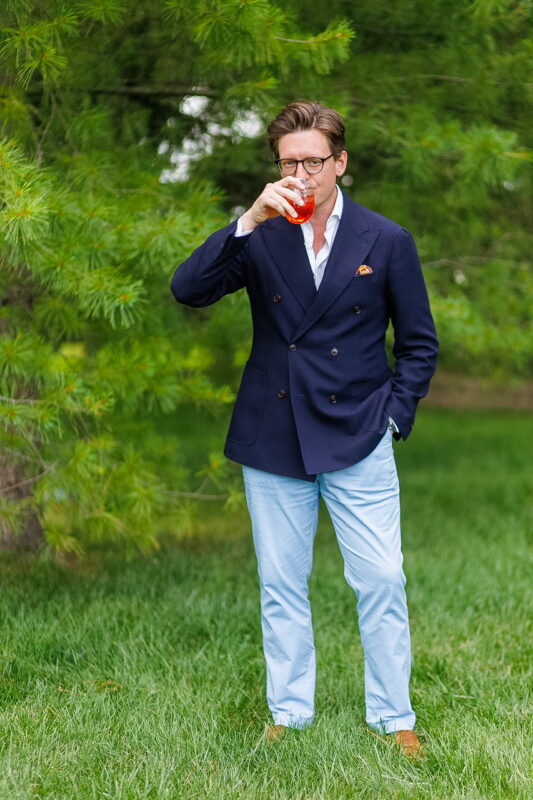
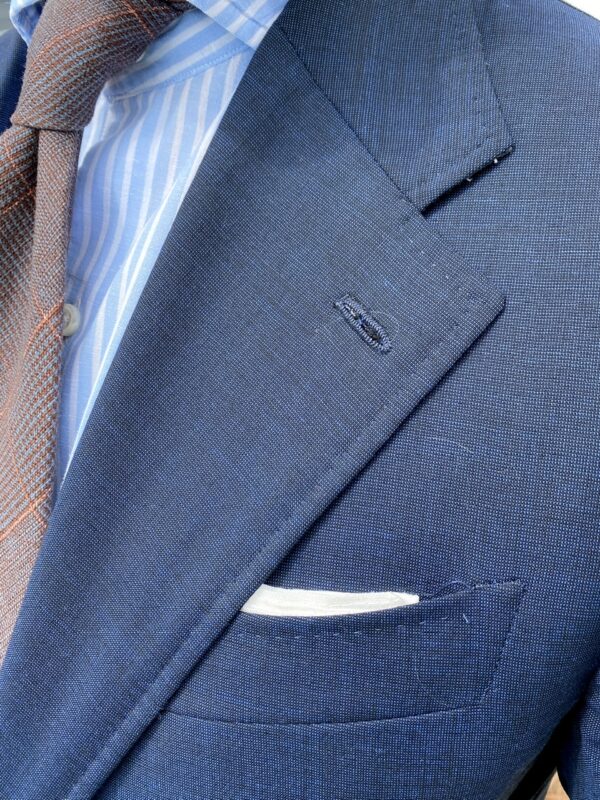
So those are the basics of learning when it’s safely in good taste to wear a suit jacket separately. I hope this post is useful and feel free to comment below with any questions!
(Help support this site! If you buy stuff through my links, your clicks and purchases earn me a commission from many of the retailers I feature, and it helps me sustain this site—as well as my menswear habit ;-) Thanks!)
Shop my clothing from this post and every other post on the Shop My Closet page. If you’re just getting into tailored menswear and want a single helpful guide to building a trend-proof wardrobe, buy my eBook. It doesn’t cost that much and covers wardrobe essentials for any guy who wants to look cool, feel cool and make a good impression. Formatted for your phone or computer/iPad so it’s not annoying to read, and it’s full of pretty pictures, not just boring prose. Buy it here.


